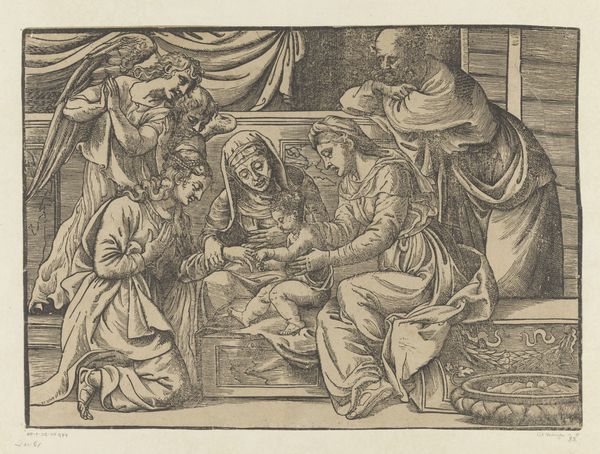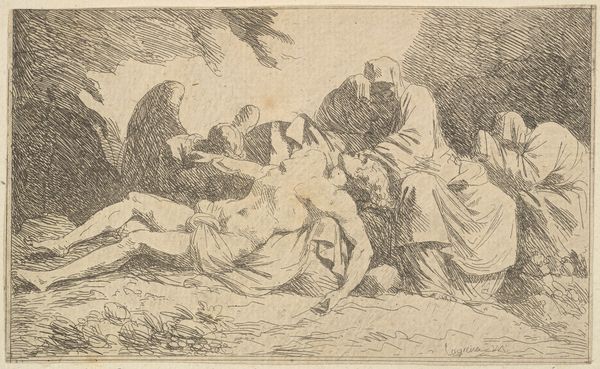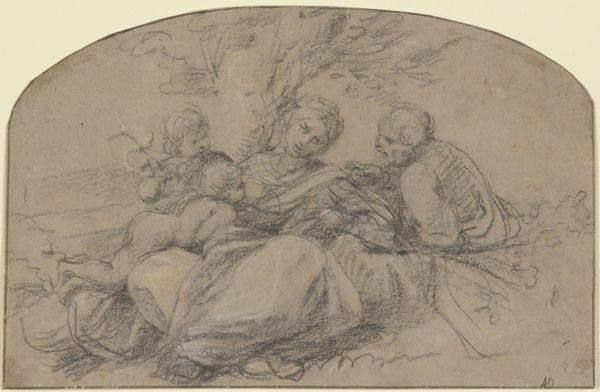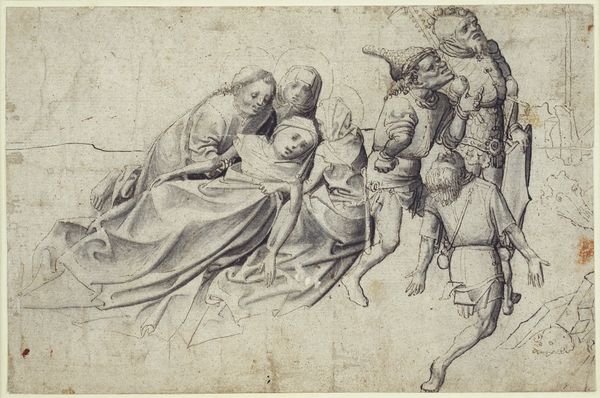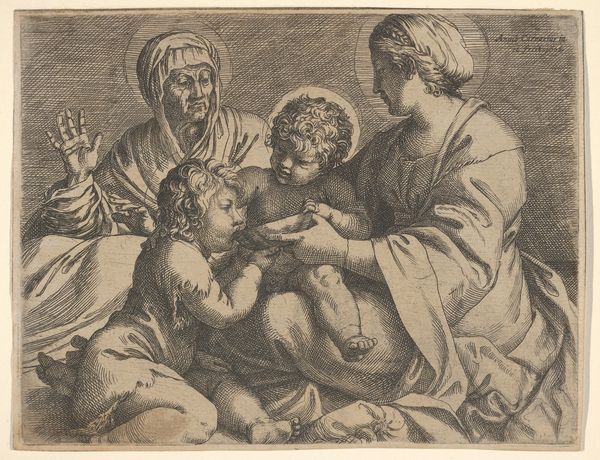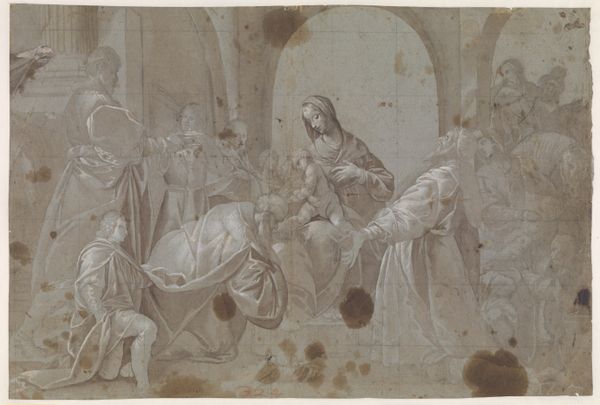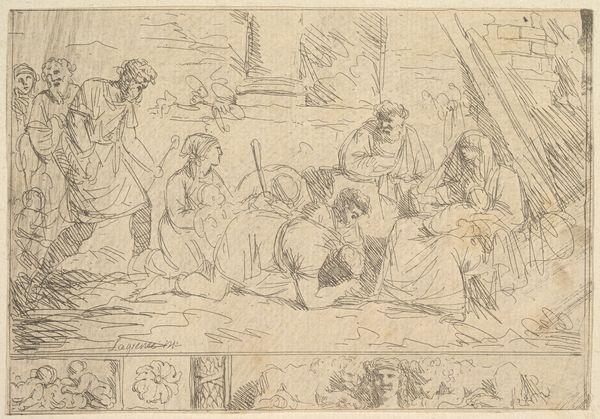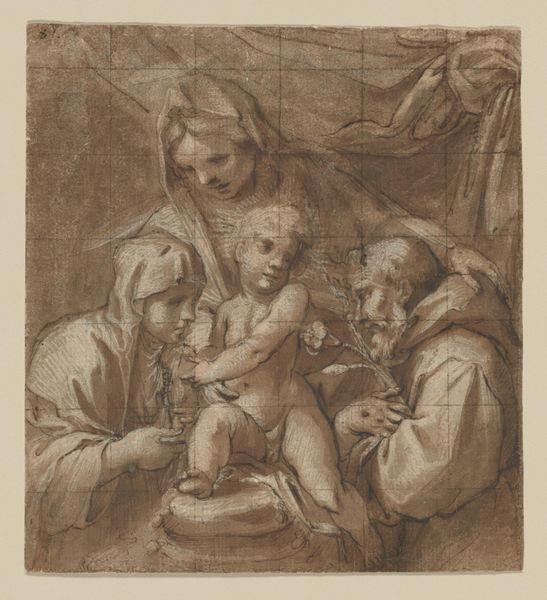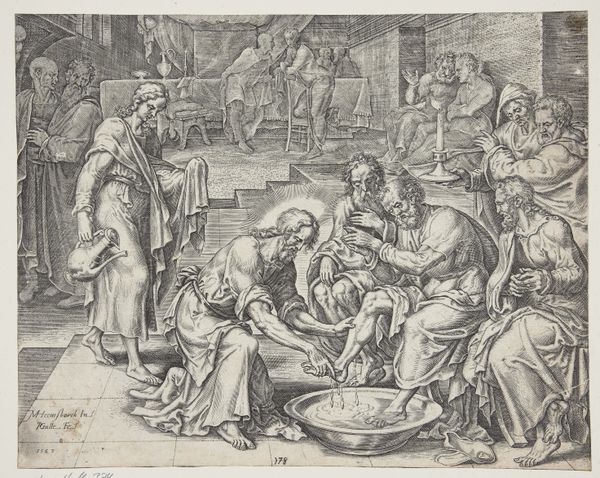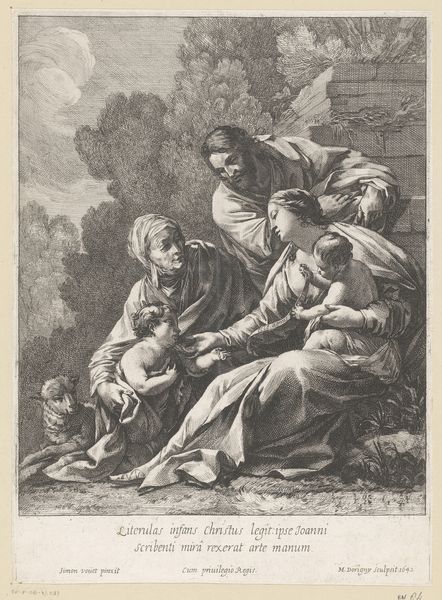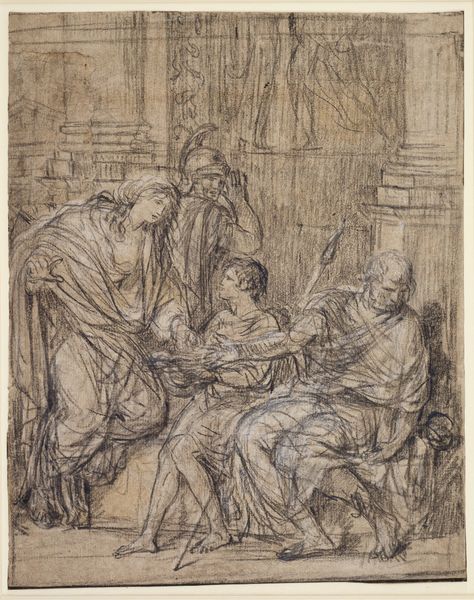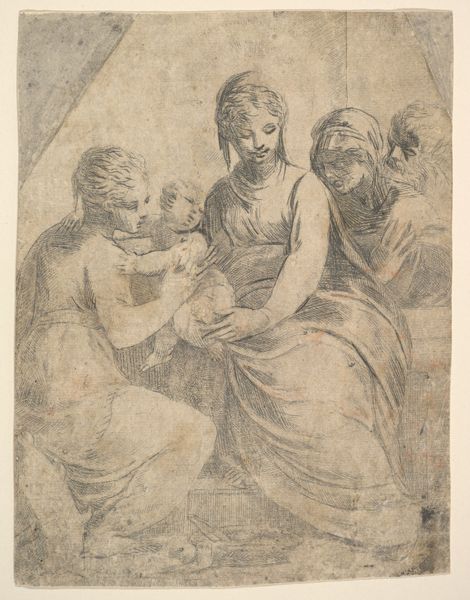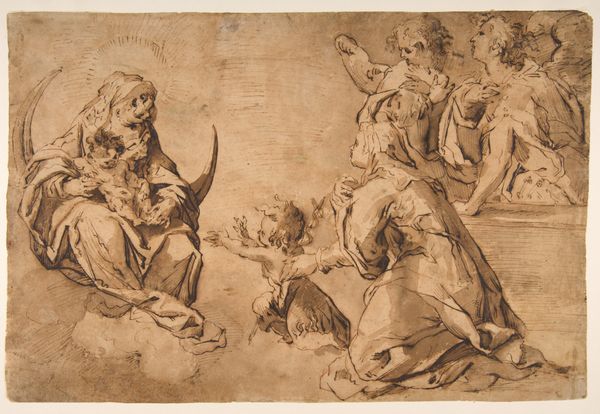
La Nativité de Jésus-Christ (The Nativity of Christ) 1762 - 1780
0:00
0:00
Dimensions: Mount: 18 1/8 × 10 9/16 in. (46 × 26.8 cm) Sheet: 3 9/16 × 5 13/16 in. (9 × 14.7 cm)
Copyright: Public Domain
Jean Jacques Lagrenée created this print of "The Nativity" using etching, a printmaking technique with a long history. It involves applying acid to a metal plate to create the image, which is then inked and printed. The artist would have covered a metal plate with a waxy, acid-resistant coating. Then, using a sharp needle, he would carefully scratch away the coating, exposing the metal underneath. The plate is then submerged in acid, which bites into the exposed lines, creating grooves. The longer the plate sits in the acid, the deeper the lines become, influencing the darkness of the printed lines. After the plate is prepared, ink is applied and then wiped off the surface, leaving ink only in the etched lines. Finally, the plate is pressed onto paper, transferring the ink and creating the print. The dense arrangement of lines speaks to the great amount of work involved in the etching process. By understanding the labor and skill involved in etching, we can appreciate its place in the broader world of creative practices, moving beyond traditional distinctions between fine art and craft.
Comments
No comments
Be the first to comment and join the conversation on the ultimate creative platform.
